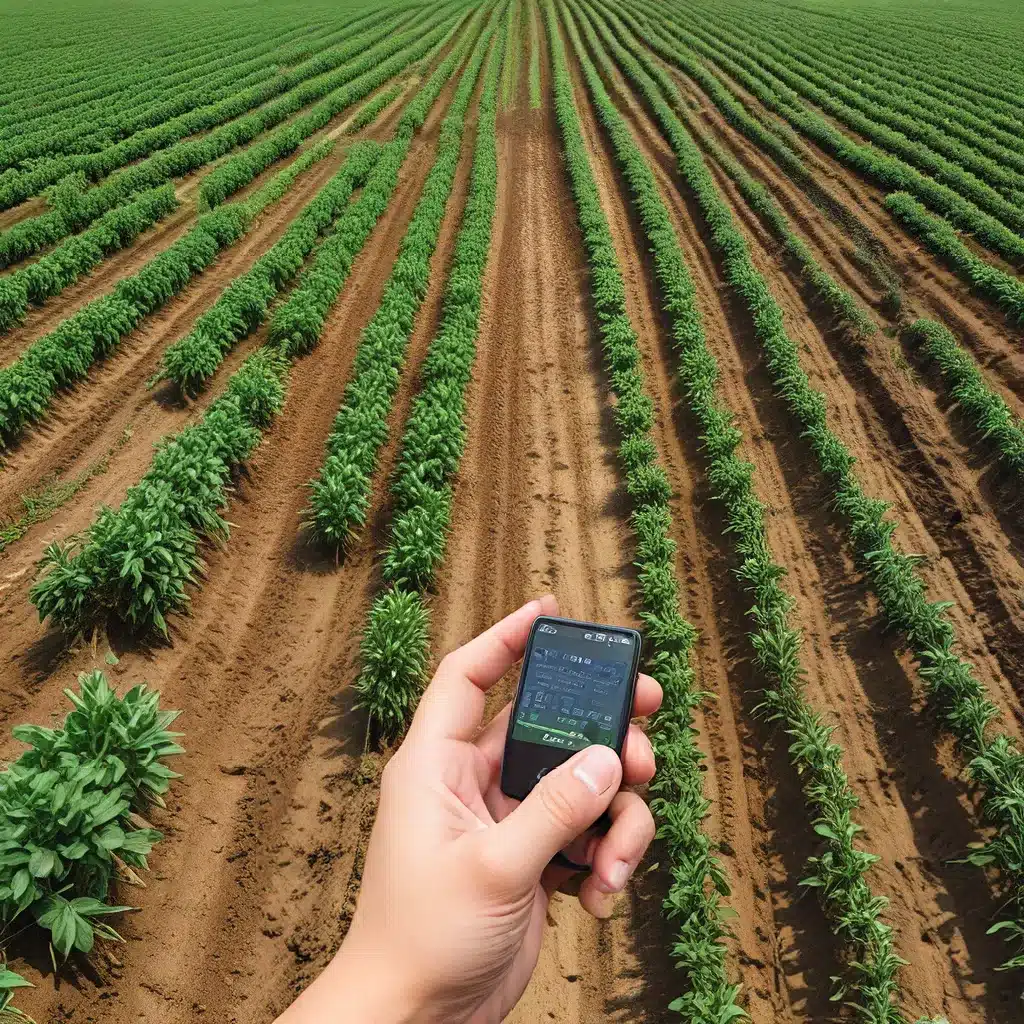
In the rapidly evolving landscape of modern agriculture, the integration of sensor networks and Internet of Things (IoT) technologies has emerged as a transformative force, paving the way for a more sustainable and efficient future. Among the cutting-edge solutions driving this revolution are Radio Frequency Identification (RFID) and Near-Field Communication (NFC), which are poised to reshape the way we approach precision farming.
Optimizing Resource Management with Sensor Networks
At the heart of this technological shift lies the sensor network, a interconnected web of intelligent devices capable of collecting, processing, and transmitting vital data. In the context of sustainable agriculture, these sensor networks play a pivotal role in monitoring and managing critical resources, such as soil moisture, nutrient levels, and environmental conditions.
By strategically deploying a network of soil moisture sensors, farmers can obtain real-time insights into the water requirements of their crops. This information allows them to optimize irrigation schedules, reducing water waste and maximizing the efficiency of their irrigation systems. Similarly, nutrient sensors can provide valuable data on the chemical composition of the soil, enabling farmers to tailor their fertilizer application to the specific needs of their crops, minimizing the environmental impact of excessive nutrient runoff.
Moreover, environmental sensors can track factors like temperature, humidity, and solar radiation, empowering farmers to make informed decisions about planting schedules, pest management, and crop protection strategies. This holistic approach to resource management, facilitated by sensor networks, contributes to the sustainability and productivity of modern agriculture.
RFID and NFC: Transforming Precision Farming
Within the realm of sensor networks, RFID and NFC technologies have emerged as particularly potent tools for precision farming. These wireless communication protocols enable the seamless identification, tracking, and monitoring of various agricultural assets, from livestock and crop inventory to farm equipment and infrastructure.
RFID-enabled livestock tracking allows farmers to monitor the health, location, and movement of their animals with unparalleled accuracy. By attaching RFID tags to each animal, farmers can remotely access real-time data on factors like body temperature, feeding patterns, and reproductive cycles. This information empowers them to make timely interventions, improve herd management, and optimize their livestock operations.
Similarly, NFC-enabled crop monitoring revolutionizes the way farmers manage their fields. By embedding NFC tags in plants or the soil itself, farmers can gather detailed data on the growth rate, nutrient absorption, and disease prevalence of their crops. This granular insight allows them to fine-tune their agricultural practices, ensuring optimal yield and minimizing wastage.
The integration of RFID and NFC technologies with sensor networks also streamlines the management of farm equipment and infrastructure. RFID-tagged tools, vehicles, and storage facilities can be easily tracked and monitored, enabling farmers to optimize their maintenance schedules, reduce downtime, and enhance the overall efficiency of their operations.
Addressing Security Challenges in IoT-enabled Agriculture
As the adoption of sensor networks and IoT technologies in agriculture continues to grow, the security of these systems has become a critical concern. Cybercriminals and malicious actors are increasingly targeting the vulnerabilities inherent in IoT devices, posing a threat to the integrity of sensitive agricultural data and the safety of mission-critical systems.
To mitigate these risks, farmers and industry stakeholders must prioritize the implementation of robust security protocols and data protection measures. This includes the adoption of encryption techniques, access control mechanisms, and secure communication protocols to safeguard the confidentiality, integrity, and availability of their sensor network and IoT-enabled systems.
Furthermore, the development of secure firmware and regular software updates for IoT devices is essential to address emerging vulnerabilities and keep pace with the evolving threat landscape. Ongoing user education and incident response planning can also play a vital role in enhancing the overall security posture of IoT-powered agricultural systems.
Energy Management: Powering Sustainable Sensor Networks
The energy efficiency of sensor networks is another crucial factor in ensuring the long-term sustainability of precision farming technologies. As sensor nodes and IoT devices proliferate across agricultural landscapes, the power requirements of these systems can become a significant challenge, particularly in remote or off-grid locations.
To address this challenge, researchers and industry leaders are exploring innovative energy management strategies that leverage renewable energy sources, energy-efficient hardware, and advanced power management algorithms. For example, the integration of solar-powered sensor nodes can provide a sustainable and self-sufficient power source for remote monitoring applications, reducing the dependence on traditional grid-based electricity.
Additionally, the development of low-power microcontrollers and energy-efficient communication protocols can significantly extend the battery life of IoT devices, minimizing the need for frequent battery replacements or recharging. Dynamic power management techniques, such as duty cycling and sensor node clustering, can further optimize the energy consumption of sensor networks, ensuring their long-term viability and environmental sustainability.
The Future of Sensor Networks in Sustainable Agriculture
As the world grapples with the pressing challenges of food security, resource scarcity, and environmental preservation, the role of sensor networks and IoT technologies in sustainable agriculture has never been more crucial. By leveraging the power of data-driven insights, farmers and industry stakeholders can make more informed decisions, optimize resource utilization, and drive the transition towards a more resilient and eco-friendly agricultural ecosystem.
The integration of RFID, NFC, and other sensor network technologies with precision farming practices is poised to revolutionize the way we grow, harvest, and distribute our food. From real-time crop monitoring to automated irrigation systems and livestock management, these innovative solutions are paving the way for a future where productivity, sustainability, and profitability converge, ultimately benefiting both farmers and consumers alike.
As we look ahead, the continued advancements in sensor network design, IoT security, and energy management will undoubtedly play a pivotal role in shaping the future of sustainable agriculture. By embracing these transformative technologies, the agricultural industry can rise to the challenge of feeding a growing global population while preserving the delicate balance of our natural resources and environment.
To learn more about the latest developments in sensor networks and their applications in sustainable agriculture, explore the resources available on sensor-networks.org.